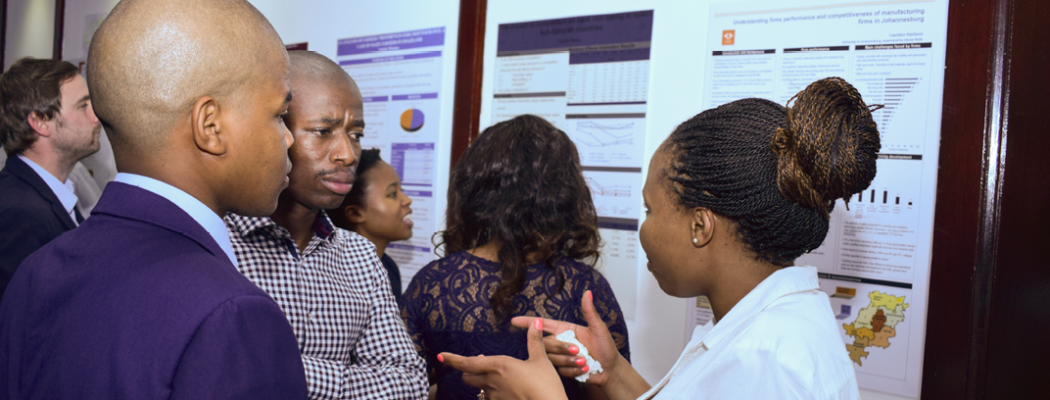A game of snakes and ladders with loaded dice — socioeconomic class and poverty in South Africa
South Africa is often cited as the most unequal economy in the world. Its experience of having to overcome both colonialism and apartheid makes it unique from the vantage of studies on socioeconomic class, economic mobility, and poverty — with household characteristics like race, gender, and geographical location playing a large role in an individual’s long-term economic prospects.
South Africa is also unique among developing countries for collecting reliable data on household consumption over time, as this data is used to measure progress in overcoming the legacy of apartheid. The National Income Dynamics Study (NIDS) in South Africa collects data on a representative sample of South Africans in consecutive years which enables a rare analysis of socioeconomic class, poverty dynamics, and economic mobility.
Eight out of 10 South Africans experienced poverty between 2008 and 2017
It is very common for South Africans to move in and out of poverty. Only 14.7% of households remained above the poverty line and only 36.1% remained below the poverty line over the entire period
Nearly half of South Africans (48.8%) were chronically poor during this period and 12% were classified as the transient poor. An additional 15% of South Africans represent the vulnerable middle class
Being African, female, a single parent, and/or rural is strongly associated with the risk of poverty in South Africa
Poverty and class in South Africa
Most measures of relative wellbeing are derived from snapshots of the economic positions of individuals at a given point in time. While these snapshots can tell us a lot about class and poverty in one moment, they are likely to ignore the more complex dynamics of socioeconomic class in ways that overlook or underestimate the economic vulnerability of people’s lived experience.
For example, South Africa reported that 55.5% of its citizens (or 5 out of 10 people) were living in poverty in 2017. But, according to NIDS data, about 80% (or 8 out of 10 South Africans) experienced poverty at least once between 2008–17. This means that 3 of every 5 South Africans, who were not poor in 2017, experienced poverty in a different year. These South Africans could remain mostly poor over their lifetime, or it could be that they live mostly middle-class lives and experience poverty only temporarily.
Socioeconomic class in South Africa
Using NIDS, we can define socioeconomic class based on a household’s relative ability to move up the ladder (access to opportunity) or chance of sliding down the ladder (risk or vulnerability). By focusing on the persistence of poverty for some and the vulnerability to poverty for others, we can paint a more complete picture of socioeconomic class in South Africa.
We divide South Africans into five socioeconomic classes: the chronically poor, the transient poor, the vulnerable middle class, the stable middle class, and the elite. We separate the poor from the non-poor using the official Upper Bound Poverty Line of R1,136 per month, below which households are unable to meet their basic needs. We further separate the chronically poor from the transient poor based on their measured propensity to escape from poverty over time.
Using these definitions, nearly half of South Africans (48.8%) were chronically poor during the period of study from 2008–17. Another 12% of the population represented the transient poor, the majority of which remained poor over the period, with only 39.2% escaping poverty during the study. Furthermore, nearly half of the middle class, or 15% of all households, are in the vulnerable middle class and nearly half of these households fell into poverty at least once during the study.
The stable middle class in South Africa is surprisingly small, representing only 21% of households, but even 12% of these households had a spell in poverty. Only 3% of South African households are classified as elite (defined as having a level of household expenditure higher than two standard deviations above the mean).
Poverty transitions
It is very common for households to move in and out of poverty over time (half of them did between 2008–17). Only 14.7% of those surveyed remained above the poverty line and only 36.1% remained below the poverty line over the entire period. It is considerably more likely for a household to be chronically poor than stably middle class in South Africa.
Households fall into poverty for many reasons. These range from job or income loss to changes in the household head or household size. Similar events can lead to poverty escapes — these causes and their relative prevalence are shown in Figure 1.
| Events triggering poverty entry | Share of entries associated with event (%) | Prevalence (%) | Events triggering poverty escape | Share of exits associated with event (%) | Prevalence (%) |
| Increase in household size | 43.6 | 24.4 | Movement from rural to urban | 45.2 | 32.5 |
| Birth of a child (0–2 years) | 33.2 | 17.5 | Rise in number of workers | 31.3 | 30.4 |
| Fall in number of workers | 27.4 | 22 | Decrease in household size | 14.8 | 11.4 |
| Change in gender of household head (male to female) | 15.4 | 15.4 | Rise in labour income (>10 %) | 13.6 | 9.6 |
| Fall or rise in labour income (>10 %) | 12.9 | 14.5 | Rise in income from from public grants (>10%) | 8 | 2.8 |
| Death of a household member | 8 | 4.9 | Change in gender of household head (female to male) | 4.8 | 7.1 |
Household characteristics
Because official poverty figures can underestimate the number of people who experience poverty over time, longitudinal studies are critical to understanding poverty dynamics
An unacceptably high number of South African households live in chronic poverty
An unacceptable high number of South African households are vulnerable to poverty
Policies that promote labour market entry, increase earned income, and alleviate the burden of household dependents, can promote poverty exits and prevent poverty entries
Policies which reduce inequalities of race, gender, and geography are also critical in the South African context
Households headed by African, female, single-parents or located in rural areas are considerably more likely to be chronically poor. In contrast, for a household to be elite or stable in the middle class, the household head normally needed to be urban, white and male, or highly educated.
Female-headed households were both more likely to be poor (71.7% experienced poverty in at least 4 of the 5 years studied) and more likely to fall into poverty (6.8% more likely than male-headed households). Similarly, African-headed households were at the highest risk of being poor (62.9% of them remained poor in 4 out of 5 years studied) and less likely to escape poverty.
White-headed households, by contrast, are at the lowest risk of being poor, (0% remained poor for at least 4 of the 5 years studied and 93.6% remained non-poor in all years). As a result, White-headed households were 26.6% less likely to fall into poverty and 42.6% less likely to remain poor than African-headed households, even when both household heads shared the same level of education.






